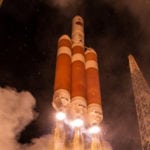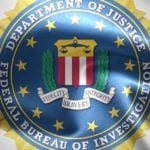 Miscellaneous
Miscellaneous  Miscellaneous
Miscellaneous  Gaming
Gaming 10 Funny Tutorials in Games
 History
History 10 Fascinating Little-Known Events in Mexican History
 Facts
Facts 10 Things You May Not Know about the Statue of Liberty
 Movies and TV
Movies and TV 10 Movie Adaptions That Brought Popular Songs to Life
 Health
Health 10 Miraculous Advances Toward Curing Incurable Diseases
 Miscellaneous
Miscellaneous 10 Undeniable Signs That People’s Views of Mushrooms Are Changing
 Animals
Animals 10 Strange Attempts to Smuggle Animals
 Travel
Travel 10 Natural Rock Formations That Will Make You Do a Double Take
 Movies and TV
Movies and TV 10 Actors Hidden in Your Favorite Movies
 Miscellaneous
Miscellaneous 10 Interesting Things Manufacturers Stopped Making and Why
 Gaming
Gaming 10 Funny Tutorials in Games
 History
History 10 Fascinating Little-Known Events in Mexican History
Who's Behind Listverse?

Jamie Frater
Head Editor
Jamie founded Listverse due to an insatiable desire to share fascinating, obscure, and bizarre facts. He has been a guest speaker on numerous national radio and television stations and is a five time published author.
More About Us Facts
Facts 10 Things You May Not Know about the Statue of Liberty
 Movies and TV
Movies and TV 10 Movie Adaptions That Brought Popular Songs to Life
 Health
Health 10 Miraculous Advances Toward Curing Incurable Diseases
 Miscellaneous
Miscellaneous 10 Undeniable Signs That People’s Views of Mushrooms Are Changing
 Animals
Animals 10 Strange Attempts to Smuggle Animals
 Travel
Travel 10 Natural Rock Formations That Will Make You Do a Double Take
 Movies and TV
Movies and TV 10 Actors Hidden in Your Favorite Movies
Top 10 Facts About The Apollo Mission That NASA Wanted To Keep Secret
Getting to the Moon was a fantastic achievement, and the technology was amazing. It also had the added complication of involving human beings.
At the time, the astronauts and rocket engineers were often portrayed as almost superhuman. In reality, they were just as flawed as the rest of us, so not everything that happened fitted in with NASA’s corporate image and public relations plan.
10Images Of Playboy Playmates Were Flown To The Moon

Alan Bean and Pete Conrad were about two and a half hours into the second moon walk of Apollo 12, when Bean turned the next page of his checklist book. He saw something he was not expecting.
On the one page was the usual list of tasks, but on the facing page was a topless young lady smiling up at him. To be precise, he was looking at a picture of Miss December 1968 from Playboy magazine. A caption had been added: “Don’t forget—describe the protuberances.”
Conrad had one of his own, and each astronaut also found a second playboy picture later in the checklist books. The additions had been made by Dave Scott, the back-up commander, and the books also contained some cartoons by Ernie Reyes, head of NASA pre-flight operations.
The two astronauts said nothing; they knew that their every word was being recorded, and American taxpayers (or at least some of them) did not appreciate practical jokes being part of the multi-billion-dollar moon landing effort. They did, however, both start to giggle. In fact, Conrad and Bean were having such a good time, laughing so often, that some on Earth worried that they might be suffering some kind of “space rapture. ”
9An Art Installation Was (Probably) Smuggled To The Moon

Apollo 15 astronaut Dave Scott left behind a tiny metal statue called “Fallen Astronaut,” a memorial to the astronauts and cosmonauts who had died in the name of space exploration. However, we have to take the word of a mystery man that a second piece of art made it there.
It goes by the name “Moon Museum,” and it traveled a quarter of a million miles without the knowledge of NASA. American sculptor Forrest Myers had the idea of sending a miniature art museum to the Moon. He contacted NASA but got no response, so he decided to smuggle it there.
He and five other well-known artists came up with designs that could be etched onto a tiny piece of ceramic. The most striking image was from Andy Warhol. Depending on your point of view, it is a rocket in flight, a stylized image of the initials AW, or the sort of crude drawing of a penis and testicles that you would expect from an adolescent boy. Whatever the images represented, Myers etched them onto a ceramic wafer normally used for telephone circuitry. The wafer was just 0.75 in by 0.5 in—roughly the same size as a thumbnail.
Layers of gold foil blankets around the base of the lunar module were to provide thermal insulation. Myers made contact with a technician working on the module who was willing to hide the tiny artwork inside these blankets. Two days before Apollo 12 launched, Myers received a telegram that read ‘Your (sic) on A.O.K. All systems go’. It was signed “John F.”
So Moon Museum is probably on the surface of the Moon. But no one has been able to identify John F, and there is only one way to prove if it’s there. Someone has to pop back up to the Moon and dismantle the bottom half of the LEM.
8The Bathroom Facilities On Apollo Spacecraft Were Less Than Ideal

On Apollo, taking a pee involved putting on a condom-style device and connecting this to a hose. The astronaut then opened a valve that sucked any urine directly out into the vacuum of space. Unfortunately, this system was far from leak-proof, but all the crews agreed it was definitely better than the procedure for having a poop.
This involved the delicately named “fecal bag.” Whenever a crew member needed to use one of these, the other two astronauts retreated as far away as possible. (This wasn’t very far; the Command Module was only 13 feet in diameter.) The man doing the business then had to strip naked and attach the bag to his backside. Next, a finger was involved. Gravity plays quite an important role on Earth-based toilets, ensuring that the poop drops into the toilet bowl. In a weightless environment, things just sit there. So each bag had a small pocket near the top, which was known as a “finger cot.” The astronaut had to use his finger to make sure separation took place and what needed to be in the bag was in the bag.
This whole process typically took 45 minutes, and accidents were frequent. This is a transcript from Apollo 10:
Tom Stafford: Oh—Who did it?
John Young: Who did what?
Gene Cernan: What?
Tom Stafford: Who did it?
Gene Cernan: Where did that come from?
Tom Stafford: Give me a napkin quick. There’s a turd floating through the air.
John Young: I didn’t do it. It ain’t one of mine.
Gene Cernan: I don’t think it’s one of mine.
Tom Stafford: Mine was a little more sticky than that. Throw it away.
John Young: God Almighty
At least one astronaut, Bill Anders of Apollo 8, took enough Imodium to keep everything inside for the duration of his flight. Anders reckoned he held the distance record, three-quarters of a million miles, for no bowel movements. He also pointed out that he had a distinct waddle when walking across the aircraft carrier deck after splashdown.
7Three Bottles Of Brandy Boarded Apollo 8

Apollo 8 began its journey back to Earth on Christmas Day. After a TV broadcast, the crew opened the locker to get their next meal. Instead of the usual tasteless space food, they found three foil pouches wrapped in green and red ribbons. They were labeled “Merry Christmas.” Inside each pouch was a Christmas dinner, including real turkey, gravy, and cranberry sauce.
At this time, Apollo 8 was still at least 200,000 miles from home. There have been other Christmas dinners in space. It is a regular event on the International Space Station. However, Apollo 8 still holds the distance record by quite a margin.
There was another treat for the astronauts in the locker: three miniature bottles of brandy. Frank Borman, the mission commander, took one look at them and ordered them to be put back unopened. Borman had investigated the Apollo 1 fire. He was probably more aware than anyone else of how many things could go wrong inside a space capsule so far from Earth. Consuming even a tiny amount of alcohol was just not going to happen under his command. However, the astronauts did get to keep their tiny bottles of brandy. Jim Lovell sold his at an auction in 2008. A collector paid just under $18,000 for the brandy that had been to the Moon.
6NASA Lost An Apollo Command Module, And The Russians Gave It Back To Them

During the summer of 1970, the United States icebreaker Southwind was cruising in the Arctic Ocean. In a rare thawing of cold war relations, the ship made a courtesy visit to the Russian port of Murmansk. What followed was bizarre.
Three US diplomats arrived to take part in a formal ceremony. Then the Russians handed over some American property. A conical object was hoisted onboard the Southwind. Here, in the far north of Russia, was an Apollo Command Module with a NASA logo clearly painted on the side.
The capsule was a dummy—a boilerplate. The recovery operations watched by millions of TV viewers at the end of each Apollo mission were carefully planned, and naval units around the world practiced recovering Apollo capsules, just in case one ever splashed down in their area. This capsule had gone missing during one of these training exercises.
The Soviet Union’s official story was that a trawler had found it bobbing around in the Bay of Biscay. Whether it was obtained by accident or by stealth, the Soviet Union held on to the capsule for at least six months. During this time, it was almost certainly examined by engineers from the Soviet space program. However, it is doubtful whether they gained any useful information. It had been made of basic sheet metal by a company in Texas for a cost of less than $15,000.
5Most Americans Did Not Like Spending Billions On Apollo
In a speech to Congress on May 25, 1961, President Kennedy announced, “I believe this nation should commit itself to achieving the goal, before this decade is out, of landing a man on the Moon.” It was not a statement but a request for funding from Congress. Kennedy got the money approved, but many Americans did not agree with the idea.
A Gallup poll soon after the speech showed 58 percent of the public opposed the plan. All through the ’60s, public approval ratings for Project Apollo struggled. Only one poll, taken in July 1969, showed that more than half of Americans considered going to the Moon was worth the expense—and that peak was just 53 percent.
4Buzz Aldrin Took Holy Communion On The Moon

In the interval between establishing that it was safe to stay and starting preparations for the first moonwalk, Buzz Aldrin made an announcement: “I’d like to take this opportunity to ask every person listening in, whoever and wherever they may be, to pause for a moment and contemplate the events of the past few hours and to give thanks in his or her own way.”
This was followed by 30 seconds of radio silence. During this time, Buzz Aldrin opened a small plastic package containing communion bread and poured a tiny amount of wine from a miniature chalice into a cup. With Neil Armstrong standing quietly next to him, Buzz Aldrin took Holy Communion. The communion bread was the first food consumed on the Moon.
Aldrin had decided that communion would be a good way to symbolize the wonder of the Moon landing. He wanted to get across the idea that the mission “transcended electronics and computers and rockets.” Aldrin included the chalice, bread, and wine as part of his strictly limited allowance of personal items.
NASA refused to publicize Aldrin’s taking of communion because it was already involved in fighting a lawsuit about religion. The crew of Apollo 8 had broadcast a reading from Genesis as they orbited the Moon. Campaigning atheist Madalyn Murray O’Hair had taken offense. Her argument was that the astronauts were government employees, at work, and that in the USA there was supposed to be a strict separation between religion and the state. NASA did not want any more legal cases, so communion had to remain something personal to Buzz Aldrin.
3 Divers Who Opened Capsules After Splashdown Had To Be Ready For A Smell

Tiny air-tight room, three men, 12 days, no shower. This is not a formula for fresh sweet air. Luckily for the astronauts, the human mind adapts to whatever the background odor is. So even at the end of a long mission, the inside of a Command Module smelled fairly normal to them. It was a different matter for the divers of the recovery crew.
Sometimes described as the worst job in the space program, the men opening the hatch had to brace themselves for a serious assault on their noses. Apollo 8 astronaut Bill Anders described the frogman poking his head in the hatch. He had a shocked look on his face and fell backward. When Anders spoke to the man later, he mentioned that the capsule must have looked bad. The reply came that the problem wasn’t how it looked, it was how it smelled.
2The Saturn V Rocket Designer Left The USA Accused Of War Crimes

Arthur Rudolph spent years working as Wernher von Braun’s deputy. For much 1960s, he was project director of the Saturn V program, overseeing the design and construction of the huge rocket. He retired on January 1, 1969, knowing his creation had taken men to the Moon. Then, during the 1970s and 80s, his past caught up with him.
Like von Braun, Rudolph had spent the Second World War developing the V2 rocket for the Nazis. This took place at an underground site and used forced labor from a nearby concentration camp. It is estimated that at least 12,000 people died making V2s—more than died as a result of them being fired—and there were people willing to say that Arthur Rudolph was at least partially responsible for these deaths.
In 1984, Rudolph was forced to leave the USA and renounce his American citizenship. He spent the rest of his life in Germany, and, although he never faced trial, there was a dark cloud over his reputation.
1A High Potassium Diet On Apollo 16 Caused A Flatulence Problem
Both Dave Scott and Jim Irwin suffered minor heart irregularities during Apollo 15. After their return, the problem was put down to a deficiency in potassium, so the astronauts on the next mission received lots of orange juice with added potassium to drink. This had a side effect that was vividly outlined by astronaut John Young. A microphone was inadvertently left on and Young’s problem was broadcast to the world.
John Young: I have the farts, again. I got them again, Charlie. I don’t know what the hell gives them to me. Certainly not . . . I think it’s acid stomach. I really do.
Charlie Duke: It probably is.
John Young: (Laughing) I mean, I haven’t eaten this much citrus fruit in 20 years! And I’ll tell you one thing, in another 12 f—king days, I ain’t never eating any more.
Soon after, Houston pointed out to Young that he had a hot mike.
Breaking wind in a spacesuit is really not a good thing to happen. Apart from the smell, the main gas emitted is methane, which is flammable. This is the last thing anyone would want inside a spacesuit or sealed spacecraft.
An ageing English geek, I am fascinated by odd history. I’ve put together some of my favorite stories here.








